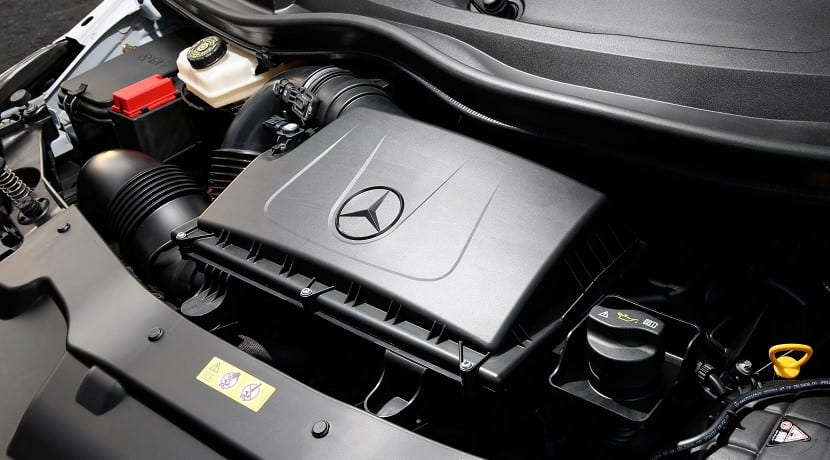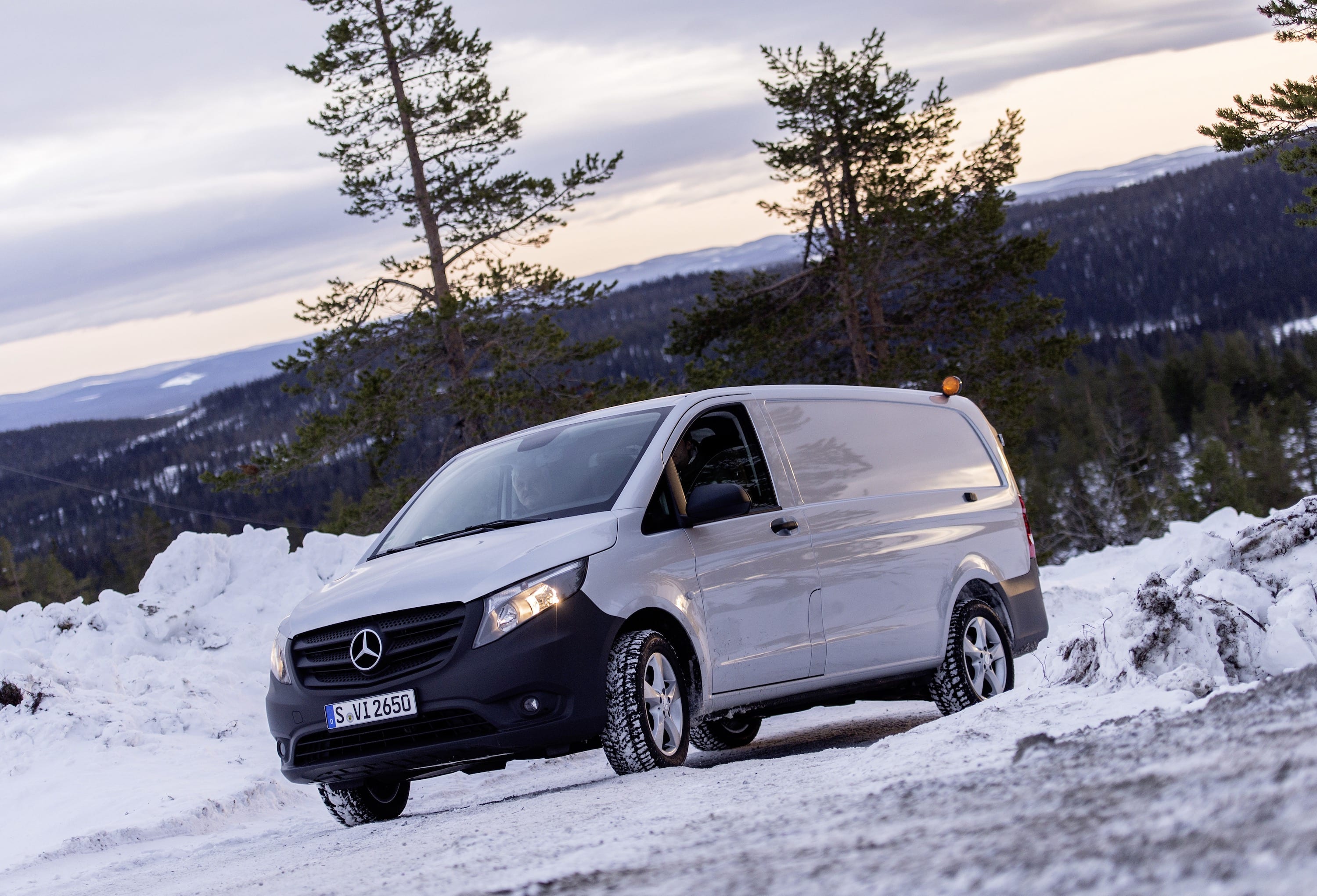
After the launch of the new generation of the Mercedes Vito last summer, just as we are recovering from the worst storm in years, the star brand continues to complete the range with the mercedes vito 4×4. The all-wheel drive van arrives just when ActualidadMotor We are testing its more luxurious sister, the Mercedes V-Class 250 Avantgarde, albeit rear-wheel drive.
The new Mercedes Vito 4 × 4 begins its marketing in Germany imminently and little by little it will reach other markets. With this new option, the Vito is the only van in its segment that offered in front rear and all wheel drive versions. The V-Class is only rear-wheel drive, although it also has an all-wheel drive 4Matic variant.

At first, the Mercedes Vito 119 Bluetec 4×4 will hit the market. This variant makes use of the 2.1 diesel engine 190 horses and 440 Nm and is associated with the seven-speed automatic transmission. The traction distribution is 45:55 and the system is complemented with the help of the brakes, which will block the wheels that are sliding to send the torque to those that have grip, thus simulating the effect of self-locking differentials. The Attention Assist systems (detects driver fatigue) and Crosswind Assist (corrects the trajectory when there is wind) are standard.
With these specifications, the average consumption is 6,4 liters at 100. The engine complies with Euro 6 and has AdBlue injection (Bluetec technology) to reduce polluting emissions. It is capable of reaching a top speed of 199 km/h. The increase in weight compared to an equivalent rear-wheel drive Vito is only 50 kilos. Unlike the previous generation, the Vito 4×4 maintains the same height as the rest of the versions, allowing access to more places where height may be restricted, such as car parks.
The starting price for the Mercedes Vito 119 Bluetec 4×4 in Germany is $36.120. It will be offered in compact, long and extra-long bodies, with the possibility of a van, mixed or glazed body. Later will come Vito 4×4 with 136 and 163 horsepower engines. For the details of marketing in Spain we will have to wait.
Source – Mercedes
Unraveling the technologies of the Mercedes Vito

Now that we know the performance and technical characteristics of this Mercedes Vito, let's see what are the keys and why it can be a commercial vehicle that suits your needs:
The 4×4 traction of the Mercedes Vito
Una van with all-four-wheel drive (4×4) It has several advantages that make it especially suitable for certain driving situations and needs, such as:
- Improves traction: Four-wheel drive distributes engine power to all four wheels, meaning all wheels are powered. This significantly improves traction in a variety of conditions, such as wet, snowy or slippery roads, off-road terrain, mud and gravel, making deliveries go almost anywhere.
- Improve stability: It also contributes to better vehicle stability, especially in adverse conditions. This can help prevent skidding and loss of control in difficult driving situations.
- Versatility in all seasons: The Mercedes Vito 4×4 is suitable for driving all year round, regardless of weather conditions. It can offer a higher level of safety and control in winter conditions or in areas with variable climates.
- Additional charge: can be beneficial when carrying heavy cargo. Distributing power to all wheels helps prevent a single wheel from being overloaded, further balancing the force needed between the two axles.
It is important to keep in mind that, while a 4×4 van offers these advantages, it can also be less efficient in terms of fuel consumption compared to front- or rear-wheel drive vans. Additionally, proper four-wheel drive maintenance is essential to ensure its optimal operation. Therefore, there may be times when you are more interested in a Mercedes Vito with a front-wheel drive configuration...
Engine with Bluetec technology
To achieve low levels of harmful emissions in the exhaust of diesel engines, initially the focus was on improving the quality of the mixing process. However, today, this phase has reached a high level of technological perfection. Therefore, further reduction of the toxicity of vehicle emissions is mainly carried out through chemical interventions. Daimler achieved significant success with the introduction of Mercedes' BlueTec technology to the public in 2006, which is now also carried by the Mercedes Vito range.
The central component of the system is a SCR (Selective Catalytic Reduction), a double wall neutralizer with a heat resistant wrap between both layers. Inside this envelope are metal or ceramic meshes covered with a special compound. Its task is to oxidize harmful substances present in the exhaust gases and transform them into water, nitrogen and carbon dioxide. The main reagent used for this composition is AdBlue, a solution composed of 67,5% water and 32,5% urea. Urea, which is the main component, is commonly used as a fertilizer and contains ammonia. This solution is stored in a separate tank and injected into the collector in small quantities. In addition, conventional filters also play their role.
In general terms, the process of exhaust gas neutralization can be summarized as follows:
- Reduction of the amount of carbon monoxide (CO) and hydrocarbons (CH) using conventional components.
- Removal of nitrogen oxides using an absorbent.
- Capture of soot particles with a special filter and their subsequent combustion.
- Transformation of the remaining harmful substances by SCR into water, carbon dioxide and nitrogen.
Initially, the palladium and platinum cells in the device are responsible for reducing CO and CH. Currently, by including the SCR, the exhaust gases are selectively treated with ammonia. Thanks to catalytic substances, they begin to react with nitrogen oxides at a temperature of approximately +300°C. As a result, they decompose into harmless gases and water.
However, some disadvantages include a high sensitivity to diesel fuel quality (it must be free of sulfur) and the relatively high cost of the system. Furthermore, BlueTec is not yet used in regions where temperatures drop below -12 degrees Celsius, as urea can freeze. However, efforts are currently being made to improve the system and resolve this issue.
Crosswind Assist
El side wind assist system, also known as Crosswind Assist, which is included as standard in the new generation of the Mercedes-Benz Vito, provides some interesting advantages when driving this type of van, which, due to its volume and lateral shape, is more susceptible to gusts. of wind. Not only does it provide greater comfort when driving, it also improves safety.
The system uses sensors to detect side wind forces affecting the vehicle and then counteracts these effects by activating the brake through ESP. This way, possible lateral oscillations are reduced of the vehicle caused by the wind.